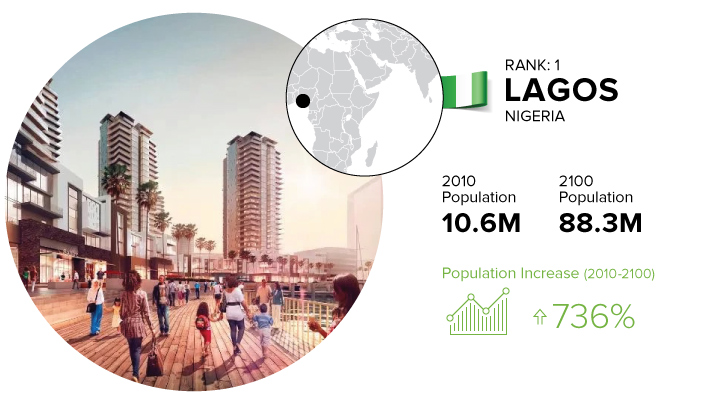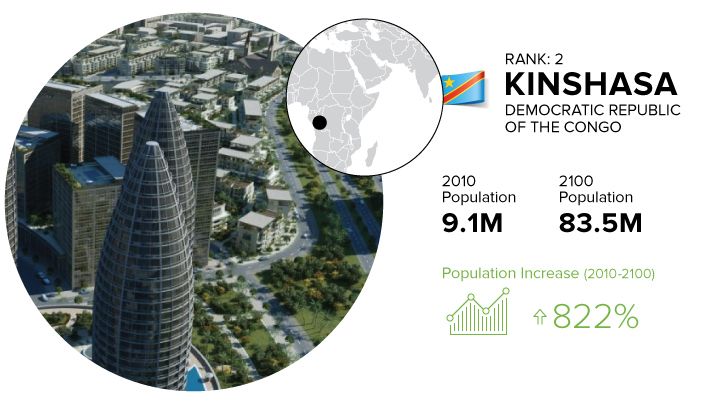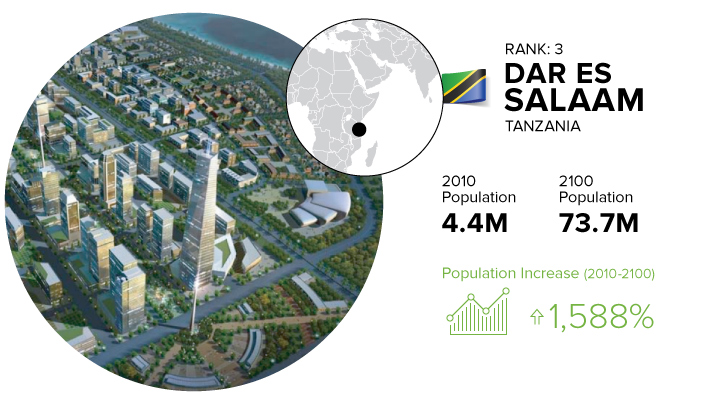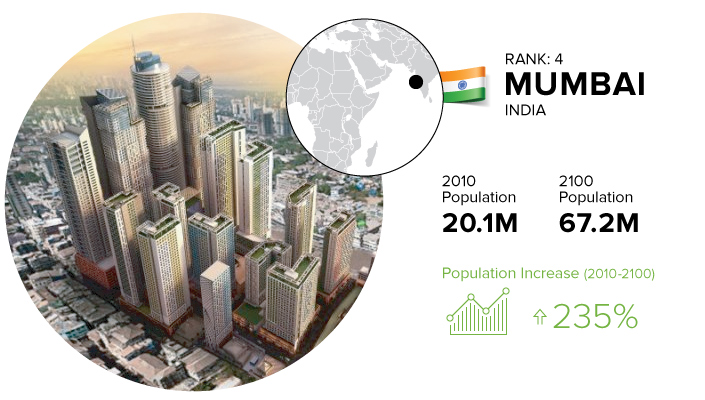Submitted by Taps Coogan on the 28th of June 2017 to The Sounding Line.
Enjoy The Sounding Line? Click here to subscribe for free.
The Global Cities Institute, recently released projections for the growth of the world’s urban areas over the next 80 years. Jeff Desjardins at Visual Capitalist has taken those figures and made a stunning animated info-graphic that reveals the huge population shifts that, if correct, will transform the world during the 21st century.
Today the world’s 20 largest cities are fairly well distributed around the world. Every inhabited continent except Australia contains at least two. By 2100 however, projections say that all 20 of the world’s largest cities will be exclusively in Africa and Asia. Interestingly, none of these cities are projected to be in China which is currently the world’s most populous country and home to several sprawling mega cities such as Guangzhou, Shanghai, and Beijing.
By 2100, the world’s largest mega cities are projected to have populations over 80 million people, surpassing the entire present day populations of Germany, the UK, Canada, or Italy.
Lagos – Nigeria, not New York, Beijing, or Mexico City, is expected to be the most populous city in the world by 2100. In fact, it is already growing so fast that estimates of its population and growth rate have become hard to determine. It is believed that over 21 million people live in Lagos today, though no-one knows exactly. By 21000, it is estimated that over 88 million people will call Lagos home, making it the biggest mega-city in the world.

The number two mega-city will also be in Africa: Kinshasa in the Democratic Republic of the Congo. Jeff Desjardins notes:
“Once the site of humble fishing villages, has already likely passed Paris as the largest French-speaking city in the world. And it’s getting bigger – by 2100, it’s projected to be the world’s second largest city overall.
How Kinshasa develops will certainly be interesting. As it stands, approximately 60% of the 17 million people living there by 2025 will be younger than 18 years old. How the city deals with education will be paramount to the city’s future progression”

Number Three: Dar Es Salaam, Tanzania, also in Africa.

And finally number four is Mumbai, India, perhaps the most familiar name on the list as it is already one of the largest cities in the world.

A degree of skepticism is always required when making projections 80 years into the future. In the 1930s, few would have predicted the massive urbanization of China, and the enormous geopolitical shifts that arose as a result of the second World War. Nonetheless, what these projections highlight is the massive divergence in population growth between Africa and Southern Asia and the rest of the world. Time will tell how long that really lasts.
P.S. We have added email distribution for The Sounding Line. If you would like to be updated via email when we post a new article, please click here. It’s free and we won’t send any promotional materials.
Would you like to be notified when we publish a new article on The Sounding Line? Click here to subscribe for free.


